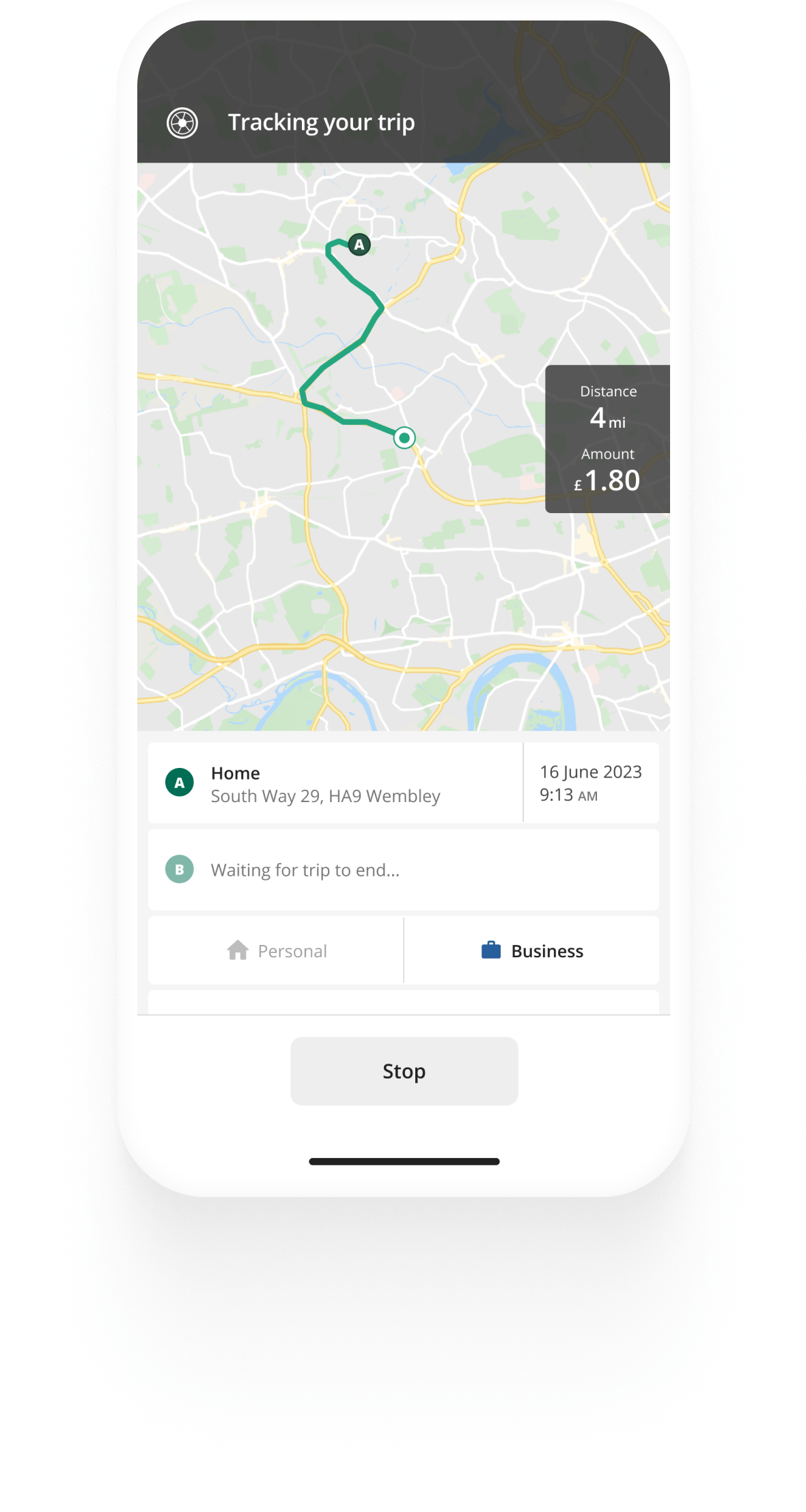Track mileage automatically
Get started.svg)
Work-from-home allowance for the self-employed
You can claim self-employed tax relief when working from home if you work for yourself. However, before you can claim these deductions, you first need to understand how to handle self-assessment expenses for working from home.
Who can claim working-from-home tax relief?
To claim tax relief for working from home as a self-employed individual, you must meet specific criteria relating to the business use of your home, primarily exclusive and regular use of a dedicated area, such as a home office. However, the method for doing this depends on whether you’re a sole trader or part of a limited company.
Sole traders
As a sole trader, you directly claim allowable expenses on your Self Assessment tax return. You can use either the simplified method or the proportion of allowable expenses method to calculate how much you can claim. You can learn the differences between the two methods below.
Limited company
If you’re self-employed but operate through a limited company, there are two ways to work out your home office expenses: HMRC’s flat rate for limited companies or renting your home office to your business.
Flat rate: Limited companies can’t claim the HMRC £6 per week flat rate, but a director can claim them from the company as a reimbursed expense.
Renting your home office: If you’re a limited company director, you can only claim back a proportion of rent, mortgage interest, or council tax if you have a formal rental agreement in place.


Mileage tracking made easy
Trusted by millions of drivers
Automate your mileage log Automate your mileage log

Automatic mileage tracking and HMRC-compliant reporting.
Get started for free Get started for freeI’m self-employed. What can I claim for working from home?
As part of your self-employed allowance for working from home, you can claim deductions for various costs. However, remember that you can only claim for the proportion of these costs directly relating to business use.
You can claim a portion of the following:
- Gas and electricity bills
- Phone calls and internet
- Office equipment, such as computers and furniture
- Mortgage payments or rent
- Council tax
You can’t claim for the following:
- Personal phone calls and internet usage
- Food and drink (even if you consumed them during your work hours)
- Non-business-related home improvements
How do you claim the working-from-home allowance?
There are two methods for claiming tax relief on the expenses you incur from working from home as a self-employed individual:
Simplified expenses method
You can save time using the simplified working from home expenses method. This method uses a flat rate based on the number of hours you work from home each month, removing the need to calculate the proportions of your business-related bills.
Note that you can only use simplified expenses if you work from home for 25 hours or more each month.
How it works
Here are HRMC’s simplified expenses rates:
| Hours of business use (per month) | Flat rate (per month) |
|---|---|
| 25 to 50 | £10 |
| 51 to 100 | £18 |
| 101 and more | £26 |
Let’s say you work from home for 60 hours each month in the financial year. In this case, you could claim £216 (£18 x 12 months) in your Self Assessment tax return.
While the simplified method undoubtedly saves you time, it might not be the best way to claim self-employed expenses from working from home. If your business-related expenses come to over £312 per month (the maximum yearly flat rate for simplified expenses), you may be better off calculating the actual cost of your home office expenses using the ‘proportion of eligible costs’ method.
While you won’t need to provide proof of the hours you worked from home using this method, it’s best to keep detailed records of all your expenses in case HMRC run tax compliance checks.
Proportion of the eligible costs method
Using this method allows you to claim a proportion of your actual expenses, which may result in a higher deduction if the business use of your home is significant.
How to work it out
- Calculate the floor area of your home used exclusively for business. For example, if your home office takes up 15% of your home’s total floor space, your business proportion is 15%.
- Identify the eligible expenses, such as business-related phone and internet use and gas/electricity.
- Apply the business proportion to these expenses to calculate your self-employed expenses for working from home.
To demonstrate how this works, let’s say your business proportion is 15%, and your monthly eligible expenses cost £100. In this case, you could claim £15 in expenses for that month.
While you may be able to claim more tax deductions using this method, it requires good record-keeping and takes more time to calculate than the simplified expenses method. Keep detailed records of all invoices and bills to justify your expenses in case HMRC runs tax compliance checks.
FAQ

Tired of logging mileage by hand?
Effortless. HMRC-compliant. Liberating.
Latest posts
- Free mileage log book template
- Mileage claim calculator for the UK
- Benefit in kind (BiK) tax on company cars
Related posts
Free mileage log book template
27 March 2025 - 2 min read
Whether you're an employee or a business owner, it's crucial to keep good mileage records in a mileage log book.
HMRC Mileage Guide
13 February 2025 - 5 min read
Welcome to our guide on mileage claims and reimbursement in the UK. This guide will walk you through the rules that apply to your situation.
Free mileage log book template
27 March 2025 - 2 min read
Whether you're an employee or a business owner, it's crucial to keep good mileage records in a mileage log book.
.svg)
